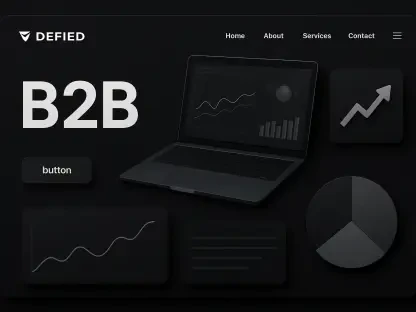Setting the Stage for Innovation in Digital Advertising
In the fast-paced realm of digital advertising, where every dollar counts and performance metrics can make or break a campaign, advertisers often grapple with the uncertainty of early-stage results. Imagine launching a new campaign only to watch costs soar while conversions lag, leaving budgets strained and confidence shaken. This scenario is all too common during the learning phase of performance-driven campaigns. YouTube, recognizing this pain point, has introduced a beta feature for retroactive cost adjustments in Demand Gen Target Cost Per Acquisition (tCPA) campaigns, aiming to alleviate financial risks and redefine how platforms support marketers in navigating initial volatility.
This technology review delves into a groundbreaking mechanism designed to protect advertisers from the unpredictability of new campaign launches. By automatically reducing costs when conversions underperform expectations, this feature promises a safety net for those venturing into YouTube’s advertising ecosystem. The focus here is to unpack how this system operates, evaluate its impact on campaign management, and assess its broader implications for the digital advertising landscape.
In-Depth Analysis of the Retroactive Cost Adjustment Feature
Mechanics of Cost Recalibration
At the heart of this beta feature lies a sophisticated process where YouTube actively monitors the performance of Demand Gen tCPA campaigns during their initial learning phase. If the system detects that conversions fall below predicted levels, it triggers retroactive cost cuts to align expenses more closely with the advertiser’s goals. These adjustments typically occur within five days of a campaign’s launch, though they may extend up to three weeks in some cases, ensuring that early hiccups do not disproportionately burden marketers.
The integration of these cost recalibrations into the final reported figures is seamless, with no separate credits or itemized breakdowns provided to advertisers. This streamlined approach minimizes administrative complexity, allowing focus to remain on campaign optimization. However, it also means that transparency into the exact adjustments applied can be limited, requiring trust in the platform’s algorithms to fairly balance costs against performance outcomes.
Impact on Target CPA and Campaign Stability
The primary objective of this mechanism is to keep the actual Cost Per Acquisition in line with the target CPA set by advertisers. By mitigating the financial sting of underperformance in the early days, it offers a buffer while YouTube’s algorithms fine-tune their understanding of audience behavior and campaign dynamics. This protection is particularly valuable for performance-focused marketers who prioritize predictable returns over speculative spending.
Beyond immediate cost relief, the feature fosters a sense of stability during a traditionally turbulent phase. Advertisers can afford to be patient as the system learns, without the looming threat of runaway expenses eroding their budgets. This balance between risk reduction and optimization time stands as a key strength, potentially encouraging more advertisers to experiment with Demand Gen campaigns without fear of initial losses.
Broader Trends in Platform Support
This initiative reflects a notable shift in how advertising platforms engage with their users, with Google taking on a share of the financial risk—a rarity in the industry. By proactively adjusting costs, the platform positions itself as a partner rather than merely a service provider, signaling a trend toward greater collaboration in achieving performance goals. Such a move could redefine expectations for how platforms support advertisers facing early-stage uncertainties.
The implications of this trend extend beyond a single feature, hinting at a future where shared accountability becomes the norm. If successful, this approach may inspire similar innovations across other advertising products within Google’s ecosystem or even among competing platforms, ultimately enhancing confidence among marketers. The willingness to absorb some risk could also make performance-driven advertising more accessible to smaller businesses or those with tighter budgets.
Performance Evaluation and Practical Benefits
Advantages for Advertisers
For advertisers launching new Demand Gen tCPA campaigns, this feature serves as a critical tool to navigate the rocky start often associated with untested strategies. It reduces the likelihood of significant financial setbacks due to poor early performance, allowing marketers to focus on refining creative elements and targeting parameters. This safety net is especially beneficial for those managing multiple campaigns or entering unfamiliar markets on YouTube.
Consider a scenario where a brand launches a campaign targeting a niche audience, only to find initial conversions far below expectations due to algorithm mispredictions. Without intervention, the high costs could deter further investment. With retroactive adjustments, however, the financial impact is softened, providing breathing room to adjust and potentially turn the campaign around without draining resources.
Challenges and Eligibility Constraints
Despite its promise, the feature is not without limitations, as eligibility for cost adjustments hinges on several factors. Advertisers must maintain high account quality, ensure proper tracking setups, and adhere to best practices to even qualify for consideration. These prerequisites underscore the platform’s intent to reward diligent campaign management while safeguarding system integrity.
Moreover, there is no guarantee of adjustments, even for eligible accounts, as they may apply selectively to specific days or campaigns. This selective application can lead to frustration among advertisers who invest heavily but do not see the anticipated relief. Google’s cautious stance in rolling out this beta feature highlights a balance between innovation and control, ensuring that support does not compromise the broader advertising framework.
Looking Ahead: Implications and Future Prospects
Shaping Advertiser-Platform Dynamics
The introduction of retroactive cost adjustments marks a pivotal moment in how platforms and advertisers share responsibility for campaign outcomes. It suggests a potential evolution toward models where platforms bear more accountability for performance, fostering trust and encouraging experimentation. This shift could pave the way for deeper partnerships, as marketers feel more supported in taking calculated risks.
Potential Expansion Across Ecosystems
Looking beyond YouTube, there is speculation about whether similar mechanisms might emerge in other Google advertising products or even on rival platforms. If platforms observe sustained success with this approach, it could become a benchmark for innovation in risk management. The period from now to 2027 might reveal whether such features become standard, reshaping how digital advertising balances risk and reward.
Final Thoughts on Adoption and Growth
Reflecting on this technology, the next steps for advertisers involve closely monitoring eligibility criteria and optimizing campaigns to align with platform guidelines, maximizing the likelihood of benefiting from cost adjustments. For Google, the challenge lies in scaling this feature while maintaining transparency and fairness, ensuring it does not favor some advertisers over others. As the industry moves forward, the enduring lesson is clear: embracing shared risk could transform digital advertising into a more collaborative and resilient space, provided platforms and marketers alike commit to refining these pioneering tools.









